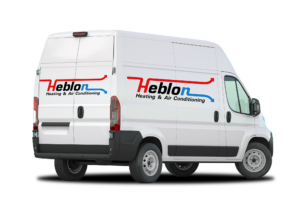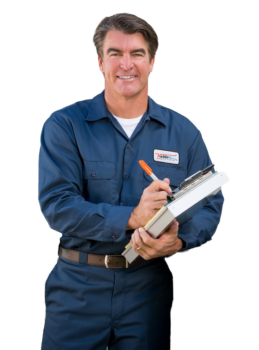Causes For A Central Heater Not Blowing Hot Air
When winter’s chill descends upon Meridian, MS, a reliable heating system becomes a necessity. However, issues like a heater blowing cool air can disrupt this essential comfort.
At Heblon Heating & Air Conditioning, we’re here to help you achieve comfort in your home! We’re here to guide you through troubleshooting your unit to ensure it functions efficiently throughout the colder season.
My Home Heater Is Blowing Cold Air, What Should I Do?
When your system isn’t performing as expected, a few furnace troubleshooting tips can often reveal simple solutions. These methods can help you identify common issues that may cause your system to blow cold air.
Check Your Thermostat
Sometimes, the solution is as simple as adjusting your thermostat settings. Ensure it’s set to heat mode and the fan is on “AUTO” to prevent it from operating without heating.
Reset The Furnace Control Panel
Resetting your furnace’s control panel can resolve minor glitches. Turn off the system, wait a few minutes, then turn it back on. If the issue persists, professional repair may be needed.
Secure Air Leaks In Ductwork
Occasionally, a heatless heater is caused by ductwork damage. Inspecting and sealing any leaks in your ductwork can prevent heat loss and improve the efficiency of your unit.
Relight The Pilot Light
For older furnace models, relighting a pilot light that has gone out can fix cool air coming from your unit. Make sure to follow the manufacturer’s guidelines to prevent safety hazards and damage to the unit.
Clear Condensate Drain Lines
Ensuring the condensate drain in high-efficiency furnaces is clear of clogs is crucial. Blockages in the drain line can keep your unit from igniting, thus causing cool air to circulate in your home.
How To Maintain Your Heating System
Effective maintenance is key to ensuring your unit operates efficiently and reliably. By taking proactive steps, you can prevent common issues that lead to cool air from your heater.
Replace The Furnace Air Filter
One common reason for a heater blowing cold air is overheating. This issue can occur from dirty air filters. Here’s what can happen if you neglect to replace your air filter:
- Reduced airflow — A clogged filter restricts airflow, making your unit work harder.
- Increased energy bills — Reduced efficiency can cause your energy bills to spike.
- Poor indoor air quality — Dust and allergens in the filter can circulate in your home, affecting air quality.
- Potential system damage — Over time, neglecting the filter can lead to wear and tear on your heater.
Regularly checking and replacing the air filter is a simple yet effective way to keep your system running smoothly. This simple maintenance task is an effortless way to give your system the TLC it deserves.
Clean The Flame Sensor
A dirty flame sensor can prevent your unit from igniting. The grime can lead to issues like furnace short cycling, which can cause cold air to blow from it. Regularly cleaning this component is a simple yet crucial aspect of upkeep.
Schedule Preventative Maintenance
Regular tune-ups by a professional are essential for maintaining your heater’s health. Scheduling routine maintenance with Heblon Heating & Air Conditioning can help identify and resolve potential issues before they escalate.
Heater Still Blowing Cold Air? Schedule A Furnace Repair
If these tips don’t resolve your heating issues, it’s time to call in the experts! Heblon Heating & Air Conditioning in Meridian, MS, offers comprehensive heating repair and maintenance services.
When you’re dealing with a heatless heater or a furnace short cycling, our team is ready to provide efficient solutions to keep your home warm. Contact us today for unmatched heating services!





